Mastering successive supply chain crises has reframed the role of logistics at BMW. Dr Michael Nikolaides, senior vice-president of production network and supply chain management, explains how his team is influencing plant and market decisions, thanks in part to improved visibility
When Dr Michael Nikolaides took over the top role at BMW Group’s global logistics organisation early in 2022, managing the supply chain was supposed to start getting easier compared to the preceding, pandemic-hit years. Analysts were forecasting some relief in semiconductor supply; and as the world learned to live with Covid, production and logistics hubs were expected to run more smoothly.

Nobody currently active in automotive supply chain would have expected a complete return to normal, least of all Nikolaides. His most recent role was leading production of BMW’s engine and electric drives division, overseeing one of the company’s most complex transformations. If anything, supply chain management should have been more stable by comparison.
It didn’t happen like that. “I thought I’d seen it all,” Nikolaides says from BMW’s Munich headquarters. “But logistics turned out to be even more volatile than engine and powertrain.”
Ongoing chip supply issues meant that, for much of the year, most plants could only confirm production schedules at short notice. The fallout from Covid still impacted shipping schedules and supply hubs, notably during rolling lockdowns in China.
The biggest shock, however, was Russia’s invasion of Ukraine, which occurred shortly after Nikolaides took over BMW’s logistics in February 2022. Along with a humanitarian crisis, the war led to shortages of key minerals and components, especially wire harnesses, which halted BMW production early in the war. It also led to an energy crisis and a more dangerous, uncertain geopolitical order, with implications across the supply chain. Furthermore, a shortage of truck drivers has had an impact on logistics planning.
Accelerating logistics’ strategic importance
BMW’s logistics team and its partners have nevertheless risen to the challenge, demonstrating high flexibility and resilience through these crises. By the end of 2022, BMW was starting to see significant production and delivery gains thanks in part to improvements in the supply chain; in the fourth quarter, the delivery volume was up 10% year-on-year.
In some cases, the multitude of crises has accelerated investment in tools or new processes, says Nikolaides. The carmaker has improved its flexibility in shifting logistics and supply chain flows. It has made gains in supply chain visibility and digitalisation. It has also made progress in logistics sustainability, such as increasing the use of emission-reducing alternative technology such as electric and hydrogen trucks, as well as recycled and lightweight packaging materials.
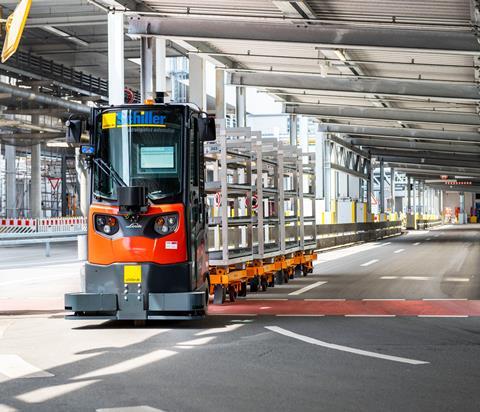
For Nikolaides, one of the most important consequences of the disruption for BMW’s logistics has been its growing influence across the company, including in manufacturing, purchasing and product strategy. The wider logistics team already plays a critical role in allocating models at plants based on order intake and in making decisions on where future models are built. However, managing the production network has taken on even greater importance with the supply chain so fragile. BMW’s top management is now following data and recommendations from logistics experts even more closely.
Better logistics visibility and data are helping Nikolaides’s team to influence BMW’s sourcing footprint, working closely with purchasing and manufacturing to shorten transport and delivery distances. Such planning is particularly important for electric vehicles, for example in determining where heavy, expensive modules such as batteries should be sourced or built.
“We try to influence sourcing today, together with purchasing colleagues, with the main strategy that production follows market, and supply chain follows production,” says Nikolaides.
“During the past three years, localisation has become more important and the intensity in how we discuss the topic in logistics has increased,” he adds. [Main article continues below]
Find out more and register to join Automotive Logistics & Supply Chain Europe 2023
Mastering supply chain volatility
Nikolaides is cautiously optimistic that this year will bring some relief to the supply chain. Whilst still challenging, there are signs of recovery in semiconductors supply, and freight and especially container shipping rates have been falling. However, he sees no return to the pre-Covid status quo. In Europe, there are shortages in vehicle logistics trucking and port capacity. In Germany, work to rail infrastructure is causing delays to many manufacturers’ shipments, including BMW. Global ro-ro shipping capacity is facing structural shortages.
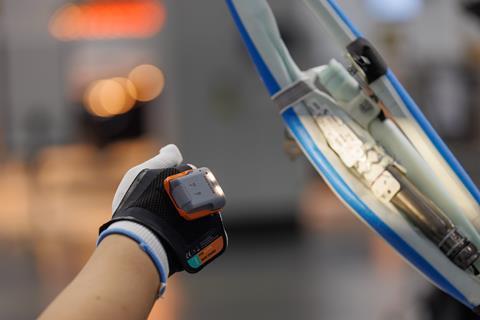
Economic and geopolitical factors are also uncertain, including ongoing risks of inflation and recession. The easing of Covid restrictions in China should eventually reduce bottlenecks but could lead to more supply disruptions in the coming months. Russia’s war in Ukraine rages on, with no immediate prospect for peace.
Such uncertainty is why supply chain flexibility and visibility have become so important at BMW. For Nikolaides, helping the company through supply and geopolitical uncertainties in both the short and long-term will make logistics a competitive advantage for BMW.
“Volatility in the supply chain will be the new normal to which we have to adapt to the future crises we know will come,” he says. “Mastering that will be a differentiating factor.”
Connected supply chain
While Nikolaides points to growing strength in logistics since the crisis, he stresses that this progress has been built on existing pillars at BMW. For example, flexibility has been at the heart of BMW’s order-to-delivery (OtD) system for more than two decades. Its Customer-Oriented Sales and Production Process (Kundenorientierter Vertriebs- und Produktionsprozess, or KOVP) allows for changes in order specification up to six days before a vehicle goes into production. KOVP was a prerequisite to BMW’s ability to pivot quickly during supply shortages, according to Nikolaides.
Increasing this flexibility has required even greater supply chain visibility. However, transparency has been a priority at BMW since well before the pandemic. Over the past six years, the logistics department has extended its Connected Supply Chain strategy, which aims at real-time visibility, internet of things (IoT) connectivity and data-driven decisions in logistics. For example, BMW increased tracking of materials in ocean containers, leveraged truck satellite locations, and used in-vehicle telematics to follow the location and condition of finished vehicles right up to handover at dealers, as part of its Connected Distribution project in vehicle logistics.
It has also expanded the use of smart transport robots (STRs), automated tugger trains and forklifts in factories, warehouses and even outdoor yards that use artificial intelligence (AI) and IoT connectivity. This equipment connects online to plant and logistics systems to improve the visibility of physical logistics. It does that through satellite and mobile links, with plans to expand to 5G.
The carmaker has strengthened such visibility in an integrated control tower and an online portal to track milestones together with logistics partners. Logistics and production control teams have combined visibility with predictive analytics to better anticipate global shipping arrival times and find patterns of potential disruption. BMW’s central control tower is in Munich, but it has extended visibility in key regions, too. A digital control room is in operation at the carmaker’s plant in San Luis Potosi, Mexico, for example, which combines regional logistics and production control data with global supply chain visibility.
In some parts of its network, BMW has integrated logistics visibility with inventory data from its plants and ERP system, which automatically provides alerts when shipping delays might impact production.
“My colleagues in material steering have online transparency of relevant parameters to make the right decisions,” says Nikolaides.
Logistics teams increasingly share critical information from this control tower at the highest levels at BMW and meet regularly with top executives to inform decisions on inventory and investments, sometimes as frequently as every day. “That is one of the key processes that we are taking forward, even if we hope things get quieter this year,” he says.
Watch the full, exculsive video interview with BMW’s Michael Nikolaides here
Buiding better connected ecosystems
Not all logistics systems and information sources connect to BMW’s control tower as seamlessly as possible, admits Nikolaides. In some cases, material and logistics planners must feed information manually into the control tower rather information exchanged online or through APIs. For other parts of its supply chain, BMW has visibility across its tier one suppliers and even further upstream. Elsewhere, the visibility gaps are considerably wider.

A major step would be for BMW to better connect data from suppliers beyond its own tier one suppliers, which would help it anticipate disruption far in advance. To achieve this visibility, OEMs and suppliers need to align on common data standards, for example through Catena-X, a European-wide initiative to create an open data ecosystem. BMW has now joined a joint venture of ten companies, including other German OEMs and tier one suppliers, called Cofinity-X. The data platform aims to improve data exchange with SMEs. Rolling out this open system will take time, but Nikolaides is optimistic.
He also sees more opportunity for AI in supply chain management. BMW already uses AI algorithms to steer STRs in plant logistics, as well as to manage returnable container loops. It uses AI for pattern recognition in its transport systems and control towers, for example to predict delivery times or to identity potential problems. Logistics and manufacturing engineers are using digital planning tools, including AR/VR equipment, that use AI to help simulate material handling and logistics processes.
Nikolaides sees scope for AI to eventually automate tasks and help create more predictive supply chains. However, he anticipates its role to remain human centric for a long time, notably in helping to reduce errors, improve planning and aide decision making.
“AI helps us to identify the correct decision from a lot of data,” says Nikolaides. “There are some standards things where it can also replace manual tasks, especially in physical logistics. But in other areas, we are a long way from using it to replace people.”
Sustainable pilots
Both supply chain visibility as well as new technology and equipment play key roles in reducing logistics emissions and environmental waste at BMW.
The carmaker has a goal of cutting emissions by 40% per car during the entire lifecycle by 2030 compared to 2019. Logistics contributes to that CO2 reduction target. According to Nikolaides, BMW achieves these goals in part through influencing local supply and manufacturing decisions, such as sourcing and logistics engineering to reduce transport distances. Every kilometre avoided is a CO2-free kilometre. BMW has also partnered more closely with logistics service providers (LSPs) and technology experts on sustainable transport equipment across inbound and outbound logistics following a technology open approach.
At its inner-city plant in Munich and further locations, BMW is working closely together with LSPs to increase the share of electric trucks used for parts supply and finished vehicle transports. Among others, BMW has introduced LNG trucks between plants in Germany and Austria, as well as in the UK, with an increasing share of bio-LNG made from organic waste.
BMW is also deploynig trucks powered by CO2-neutral, second-generation biofuels. In Europe, the company is testing and implementing hydro-treated vegetable oil (HVO) with its logistics partners.
In 2020, BMW was the first OEM to pilot the use of second-generation marine biofuel in ro-ro shipping together with the initiative Goodshipping. In 2022, the use of this marine biofuel was used with a maritime logistics provider and BMW vehicles were partly transported CO2 neutrally between Europe and South Africa.
BMW is taking an active role in national and international research initiatives to drive technological change in logistics. It is part of the EU-funded H2Haul project which aims to develop and deploy 16 hydrogen fuel cell trucks in four countries. It is leading the Hydrogen Combustion Engine Trucks (HyCET) consortium, funded by the German Federal Ministry for Digital and Transport, which will demonstrate the viability of hydrogen-powered, heavy-duty trucks in transport logistics. New high-capacity hydrogen refuelling stations will be installed to provide reliable hydrogen supplies for both projects.
Hydrogen plays an important role also within intra-logistics. At its plant in Leipzig, Germany, for example, a trial using hydrogen-powered forklifts has expanded to a fleet of 130, the largest in Europe. [Main article continues below]
Shaping the future of BMW’s supply chain and production
Dr Michael Nikolaides has led BMW Group’s logistics management since February 2022 as senior vice-president for BMW’s production network and supply chain management. In this role, he and his team are essential to meeting wider BMW manufacturing and sales objectives. That includes leading on key processes and technology that enable the carmaker’s iFactory strategy, which aims for ‘lean, green and digital’ production, and in ramping up electric vehicle manufacturing and distribution.
Nikolaides oversees all logistics functions, including inbound logistics, vehicle distribution, packaging, and overseas supply, along with a team focused on supply chain digitalisation. His department also has responsibility for plant allocation and programme planning – a role that Nikolaides led at BMW earlier in his career. That helps to ensure that the carmaker meets customer orders based on the optimal mix of production, supply and logistics capacity.
The department takes a strategic role in shaping the supply chain of the future, helping to determine where new products will be built and planning logistics networks for future models. The logistics team thus has a strong voice in influencing ‘local for local’ manufacturing and supply.
Nikolaides joined BMW in 2004 and has held roles across production, programme management and strategy, including most recently as senior vice-president for engines and electrified powertrains. He studied Physics at the Technical University of Munich and Harvard University in Boston, Massachusetts and holds a doctorate in Physics.

Packaging protection
Another important area to meet logistics emission targets is in packaging. The carmaker wants to reduce single-use packaging and increase the use of alternative, sustainable materials and lightweight packaging.
BMW has set this commitment in its agreements, aiming to increase the proportion of recycled material in reusable packaging to more than 35% for contracts awarded starting in 2022. Specific examples include using higher levels of recycled materials in expanded polypropylene containers, folding plastic pallet containers and small-load carriers.
“Packaging is an important lever to reduce CO2 emissions. We want to have higher quota of recycled materials and we want to work with our providers, as we see a lot of opportunities,” Nikolaides says.
Besides the use of recycled material, the avoidance of packaging in the first place has a significant impact on environmental protection. Since 2023, BMW has stopped using film as transport protection for finished vehicle distribution. This means a significant saving of plastic waste in its production and a further CO2 reduction of around 1,400 tonnes per year.
Investing in innovation, flexible with partners
Nikolaides recognises that major changes in transport technology require large investment, especially in sectors such as shipping and aviation. At the same time, many parts of the wider automotive logistics sector are short of equipment and need to invest in capacity and technology to meet demand, and remain fit for purpose. The situation raises the question of whether OEMs should reconsider the length and scope of contracts with LSPs to give them greater confidence to invest.
However, Nikolaides points to partnership and innovation, rather than exclusivity and guarantees in agreements, as the best approach for BMW’s logistics. The carmaker does not want to be locked into contracts that limit its ability to react to supply chain changes.
“For us, partnering with our providers over the long term is important, but we also have to be flexible,” he says. “To manage the ‘unknown unknowns’ in the supply chain, you need a system to react, and you do that together with partners, but we have to be able to make changes.”
While he expects the transport sector to invest in capacity and develop new technologies, he wants BMW to be front of the queue in trialling and implementing them. Nikolaides makes an open call for ideas and innovations, pointing out that the carmaker is especially willing to establish pilots with providers.
“We have fascinating projects, such as electric trucks, and I would encourage everyone, if you have ideas, then we would be interested to see how we can work together,” he says.
“For us, partnering with our providers over the long term is important, but we also have to be flexible. To manage the ‘unknown unknowns’ in the supply chain, you need a system to react, and you do that together with partners, but we have to be able to make changes.”
–Michael Nikolaides, BMW Group
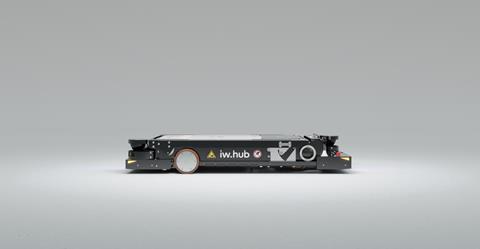
Lean and localised
For Nikolaides, effective logistics is an enabler of BMW’s strategy and objectives, for example underlining BMW’s iFactory production objectives to be ‘lean, green and digital’. That includes increasing flexible, efficient manufacturing, reducing distances in the value chain, and improving visibility.
“Logistics is the designer of the production network,” says Nikolaides. “If you think about lean then supply chain localisation is one of the key levers for an efficient transport network. And if you have shorter transport distances, you are emitting less CO2.
However, in recent years, logistics has become a bigger driver of BMW’s production and market strategy. Its products will always be its key advantage for customers but Nikolaides sees a crucial role for his team in influencing manufacturing footprints, and developing the right supply and inventory strategy to offer customers full options and customisation, even during times of tight capacity.
“Mastering the supply chain will be a competitive factor for the future,” he says. “Complexity won’t go away, and if you can master that, then you can play a significant role in the success of the company. That’s very exciting because it means logistics can be a differentiator in the success of BMW.”
Topics
- AI & Predictive Analytics
- Asia
- BMW
- Digitalisation
- Editor's pick
- Europe
- features
- Finished Vehicle Logistics
- Germany
- Green Freight & Transportation
- Inbound Logistics
- Interviews
- Inventory management
- Lean Logistics
- Lean Transformation
- Materials handling
- North America
- OEMs
- Packaging
- Plant Logistics
- Rail
- Road
- Shipping
- Supply Chain Planning
- Sustainability
- Sustainable Supply Chain Design
- Telematics
- Track-and-trace




























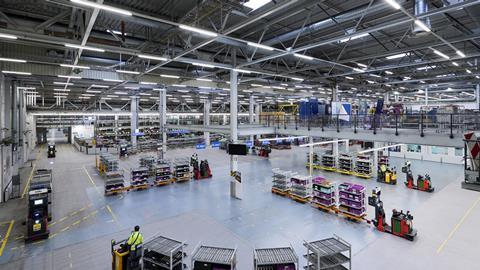
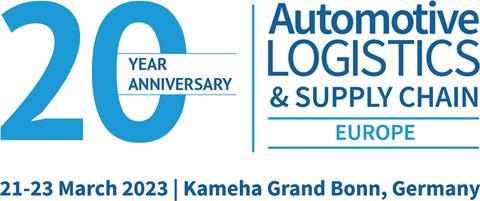
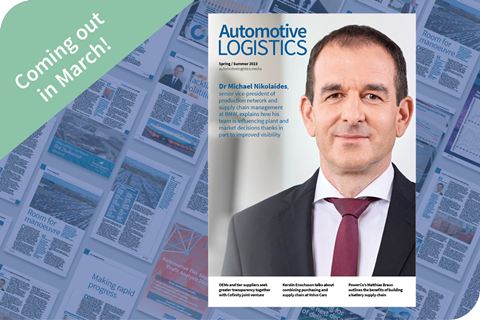

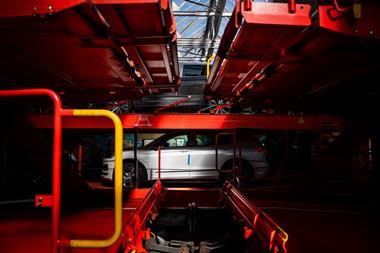
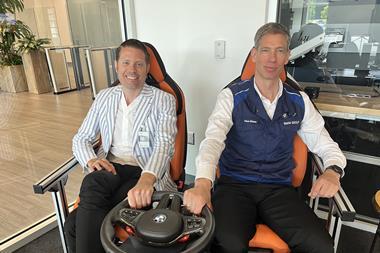

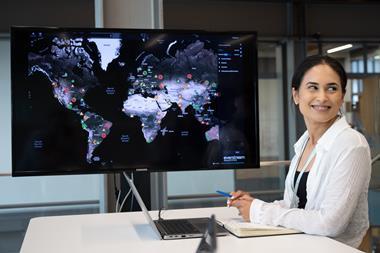
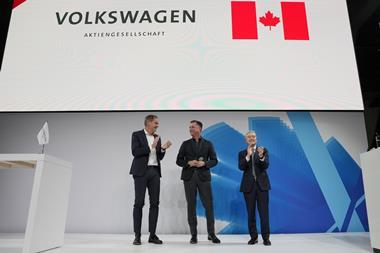
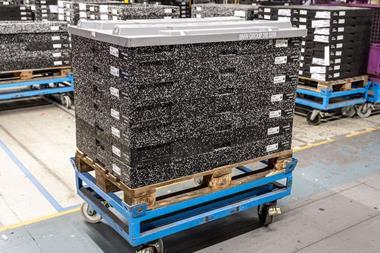



No comments yet